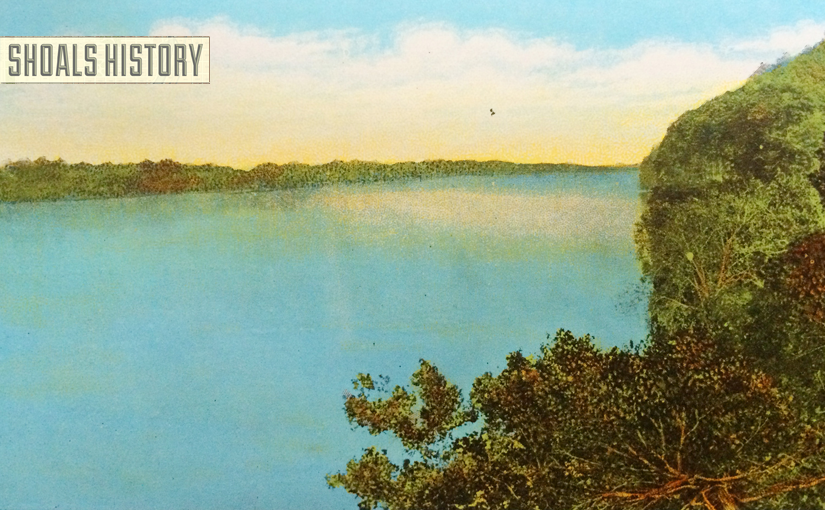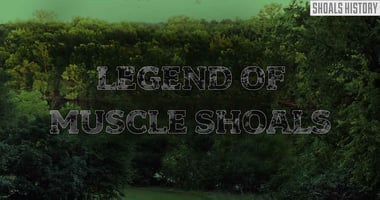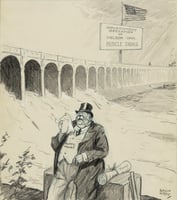An Ideal Location for a City — Florence* In the beginning of the world, so the Cherokees said, a...
View from Lover’s Leap on the Tennessee River

In the late 19th century, a traveller revisits the area around this scene of “Lover’s Leap” after being gone 22 years. He beautifully recounts the horrors of the Civil War mixed with the unmistakable beauty of the Shoals area on a trip down memory lane searching for the name of his first love carved into a tree a quarter century before.
“On the bluffs overlooking the Tennessee is one of the most beautiful landscape views, looking north, vision ever beheld. The heaven-reaching church spires, and church bells a ringing, viewed and heard in the beautiful glint of a Sunday sun — what more would mankind desire to prove the existence of an Almighty Being? But in the ramble I came across some very forcible reminders of the 4-year disagreement.
In my search for a name engraved on the bark of a beech tree that had been cut there twenty-two years ago, I found several others that may be of interest to your readers:
“R.M. Rasser, Lumsden’s bat’y, ’62 Tusk., Ala.”
“W.N. Rubanbo, 1864. 6th Reg’t, Co. C.”
“W Merchant, Drummer. [Balance of inscription unintelligible.]”Where are these soldier boys now? Possibly their bones are bleaching on one of many fields of conflict, and again they may be occupying the position of good and useful citizens.
There on that little rise 300 feet from the edge of the cliff is where a Federal officer committed suicide by hanging. His body was not discovered until it was very badly decayed. When the citizens found it they made away with it, fearing that if it was discovered by Federal soldiers that they would not believe the “suicide” part of the story and wreak vengeance on them.
But in the rambling search we are again brought back to the grand river, and what a grand sight bursts on the vision! An unbroken panoramic view of Florence from Canaan to Hotel Lauderdale — more than three miles. Then as the needle points from the river to the University with the big water tower as the background. The picture is one the masters would hesitate to transfer to canvas.
From the ledge to the water below, perpendicularly, is at least one hundred feet, with not a shrub to obstruct the view. It is just such a place as the romancer would select for a “lovers leap” and tell how some great young Chieftain cleft the atmosphere chanting his death lullaby, because some aboriginal princess had been bitten by a rattle snake — or words to that effect.”


